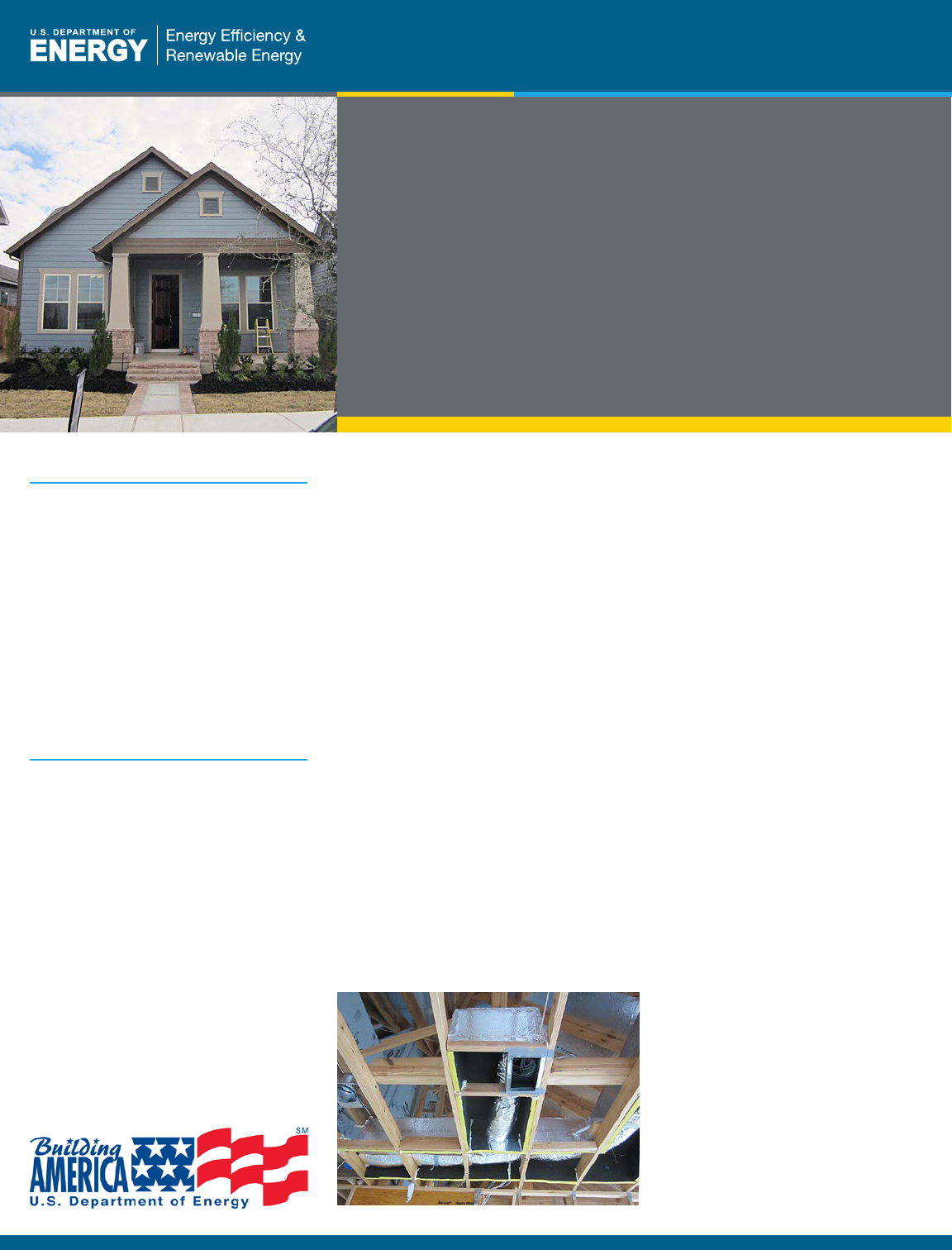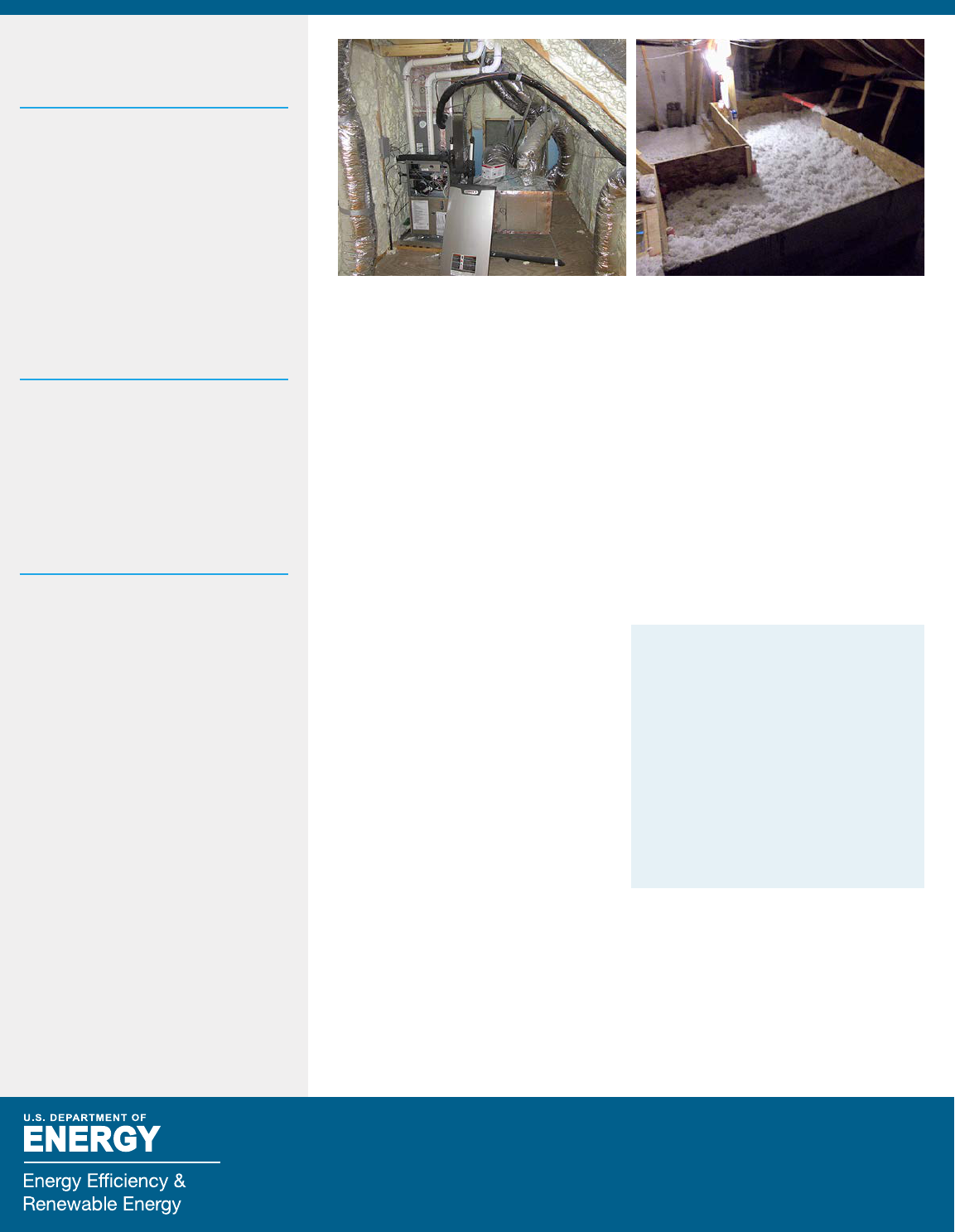
CLEAN CITIES
BUILDING TECHNOLOGIES OFFICE
Building America Case Study
Whole-House Solutions for New Homes
HVAC Design Strategy for a
Hot-Humid Production Builder
Houston, Texas
PROJECT INFORMATION
ConstructionNewHome
TypeSingle-familyproductionbuilder
Builder
DavidWeekleyHomes–Houston
wwwdavidweekleyhomescom
new-homestxhouston
Sizeft
toft
PriceRangeaboutto
DateCompleted
ClimateZoneHot-humid
PERFORMANCE DATA
HERSindex
Builderstandardpractice
casestudy-ft
house
Projectedannualenergycostsavings
Incrementalcostofenergyeciency
measures
Incrementalannualmortgage
Annualcashflow
BillingdataNotavailable
In this project, Building Science Corporation, a U.S. Department of Energy
(DOE) Building America team, collaborated with David Weekley Homes in
Houston to develop an economical method of locating the HVAC system within
the conditioned space of three research homes. The goal of the research was
twofold: to develop cost-effective and replicable designs for locating ducts in
conditioned space; and to complete high performance technology packages that
will comply with future code improvements.
Traditional methodologies have included either utilizing an extensive system
of dropped ceilings and mechanical closets, or converting the vented attic to
an unvented cathedralized attic with polyurethane spray foam installed at the
roof plane. The builder sought an alternative that can avoid the aesthetic impact
of widespread dropped ceilings and the cost impact of spray foam unvented
cathedralized attics.
As a production builder, David Weekley Homes must make decisions about
designs in the context of large volume production. The builder employs 2×6 walls
at 24 in. o.c. with insulating sheathing along with high performance windows
and high efciency equipment. Relocating the HVAC systems to conditioned
space represents the single most impactful residential building design improve-
ment, with regard to energy efciency.
Insulated attic coers were utilized in key
locations to allow for the placement of
ductwork in conditioned space without
dropping the ceiling. This maintained
the indoor aesthetic in rooms such as
kitchens, living and dining areas, and
wide open spaces.

Printed with a renewable-source ink on paper containing
at least 50% wastepaper, including 10% post consumer waste.
For more information, visit:
www.buildingamerica.gov
The U.S. Department of Energy’s Building America program
is engineering the American home for energy performance,
durability, quality, affordability, and comfort.
DOE/GO-102014-4365 • March 2014
BUILDING AMERICA CASE STUDY: WHOLE-HOUSE SOLUTIONS FOR NEW HOMES
Key Energy Eciency
Measures
HVAC
space
conditionedspaceDuctleakageto
houseventilationsystem(fancycling
withoutsideairduct)
outside
ENVELOPE
ventedattic
framewallatinoc
LIGHTING, APPLIANCES, AND
WATER HEATING
Lessons Learned
• Duct coffers and mechanical closets are best installed by the HVAC contractor
to avoid separate visits from other trades.
• The builder expects to vastly improve its HVAC installation methods and save
about 40%–50% in future installations.
• Moving the HVAC system to conditioned space reduces the HERS Index by
about four points and saves 4%–5% in annual source energy use.
• This duct design methodology satises energy codes (e.g., the 2012 IECC)
and energy efciency program criteria (e.g., DOE Challenge Home).
• In future homes, the builder may
choose to develop new oor plans
that more seamlessly integrate
the HVAC system in conditioned
space, as opposed to retrotting
house plans. This could lead to
additional cost savings and repre-
sents the most affordable duct
design solution.
America report, HVAC Design Strategy for
a Hot-Humid Production Builder, at
www.buildingamerica.gov
Image credit: All images were created by the
IBACOS team.
“This project helped us nd unique
ways to achieve cost-effective,
production-oriented processes
that enhance the energy-saving
programs we include on our homes.”
– Mike Funk, Quality Coach
David Weekley Homes
On the value of this HVAC
design research
(right photo) to ensure consistent levels of ceiling insulation over duct coers
